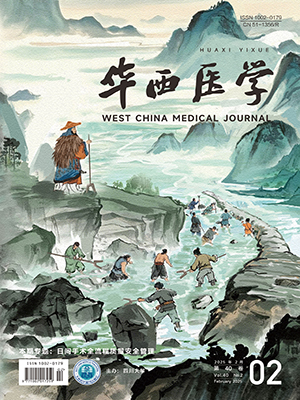| 1. |
Hany TF, Steinert HC, Goerres GW, et al. PET diagnostic accuracy: Improvement with in-line PET-CT system:initial results[J]. Radiology, 2002, 225(2):575-581.
|
| 2. |
Jackson J, Pan T, Tonkopi E, et al. Implementation of automated tube current modulation in PET/CT:prospective selection of a noise index and retrospective patient analysis to ensure image quality[J]. J Nucl Med Technol, 2011, 39(2):83-90.
|
| 3. |
邓明. 核医学显像中注射技术误差分析及控制[J]. 现代临床医学生物工程学杂志, 2001, 7(3):225.
|
| 4. |
贺小红. 18F-FDG正电子显像质量保证[J]. 国外医学:放射医学核医学分册, 2004, 28(5):193-196.
|
| 5. |
Shankar LK, Hoffman JM, Bacharach S, et al. Consensus recommendations for the use of 18F-FDG PET as an indicator of therapeutic response in patients in National Cancer Institute Trials[J]. J Nucl Med, 2006, 47(6):1059-1066.
|
| 6. |
Kawashita NH, Brito MN, Brito SR, et al. Glucose uptake, glucose transporter GLUT4, and glycolytic enzymes in brown adipose tissue from rats adapted to a high-protein diet[J]. Metabolism, 2002, 51(11):1501-1505.
|
| 7. |
Popilock R, Sandrasagaren K, Harris L, et al. CT artifact recognition for the nuclear technologist[J]. J Nucl Med Technol, 2008, 36(2): 79-81.
|
| 8. |
陈泽龙, 谢康宁, 漆家学, 等. PET/CT图像基于CT衰减校正伪影的实验研究[J]. 医疗卫生装备, 2014, 34(3):81-84.
|
| 9. |
郭悦, 秦嵩, 刘秀芹, 等. PET/CT图像膈肌上方条带状伪影特征及影响因素分析[J]. 医学研究杂志, 2013, 42(3):104-107.
|
| 10. |
Kawano T, Ohtake E, Inoue T. Deep-inspiration breath-hold PET/ CT of lung cancer:maximum standardized uptake value analysis of patients[J]. J Nucl Med, 2008, 49(8):1223-1231.
|
| 11. |
Meirelles GS, Erdi YE, Nehmeh SA, et al. Deep-inspiration breathhold PET/CT:clinical findings with a new technique for detection and characterization of thoracic lesions[J]. J Nucl Med, 2007, 48(5): 712-719.
|
| 12. |
Nehmeh SA, Erdi YE, Meirelles GS, et al. Deep-inspiration breathhold PET/CT of the thorax[J]. J Nucl Med, 2007, 48(1):22-26.
|
| 13. |
Grgic A, Nestle U, Schaefer-Schuler A, et al. FDG-PET-based radiotherapy planning in lung cancer:optimum breathing protocol and patient positioning——an intraindividual comparison[J]. Int J Radiat Oncol Biol Phys, 2009, 73(1):103-111.
|
| 14. |
De Juan R, Seifert B, Berthold T, et al. Clinical evaluation of a breathing protocol for PET/CT[J]. Eur Radiol, 2004, 14(6): 1118-1123.
|
| 15. |
Nehmeh SA, Erdi YE, Ling CC, et al. Effect of respiratory gating on quantifying PET images of lung cancer[J]. J Nucl Med, 2002, 43(7): 876-881.
|
| 16. |
Nehmeh SA, Erdi YE, Ling CC, et al. Effect of respiratory gating on reducing lung motion artifacts in PET imaging of lung cancer[J]. Med Phys, 2002, 29(3):366-371.
|
| 17. |
Nehmeh SA, Erdi YE, Pan T, et al. Four-dimensional (4D) PET/CT imaging of the thorax[J]. Med Phys, 2004, 31(12):3179-3186.
|
| 18. |
Nehmeh SA, Erdi YE, Pan T, et al. Quantitation of respiratory motion during 4D-PET/CT acquisition[J]. Med Phys, 2004, 31(6): 1333-1338.
|
| 19. |
Boucher L, Rodrigue S, Lecomte R, et al. Respiratory gating for 3-dimensional PET of the thorax:feasibility and initial results[J]. J Nucl Med, 2004, 45(2):214-219.
|
| 20. |
Nye JA, Esteves F, Votaw JR. Minimizing artifacts resulting from respiratory and cardiac motion by optimization of the transmission scan in cardiac PET/CT[J]. Med Phys, 2007, 34(6):1901-1906.
|




